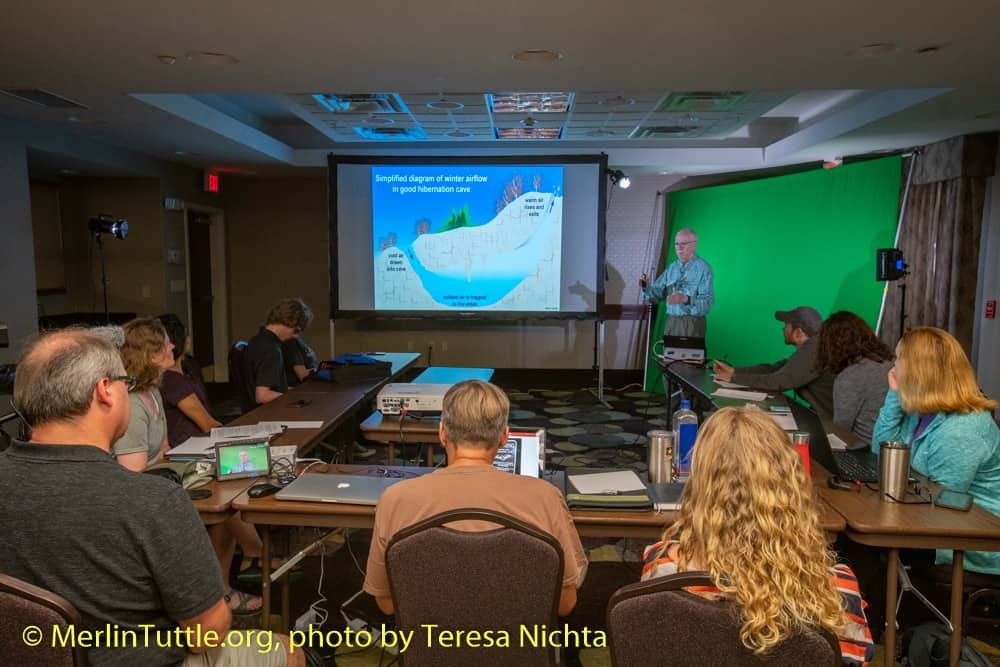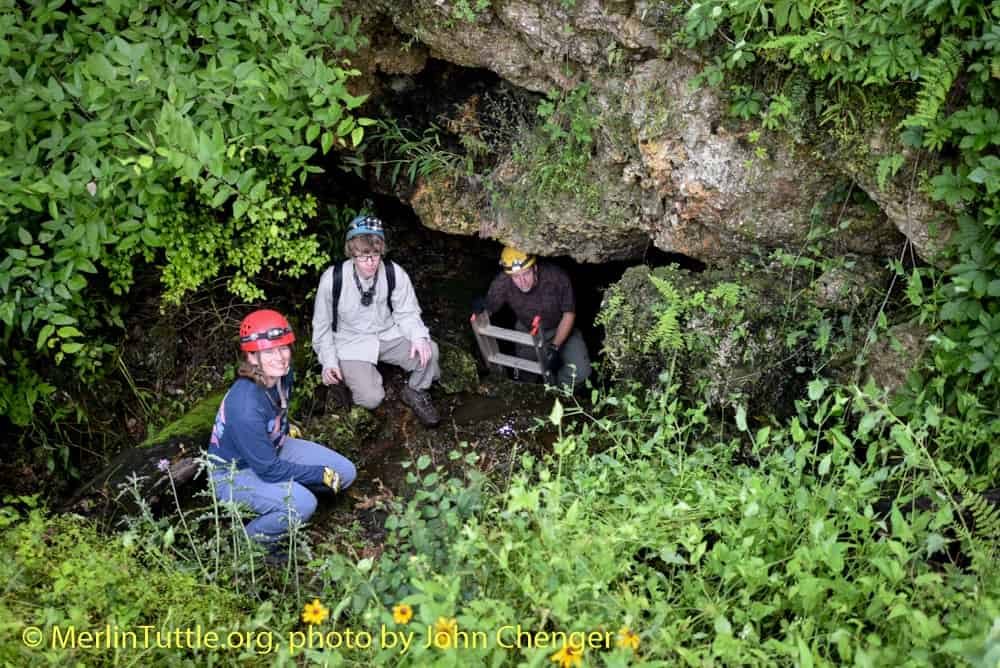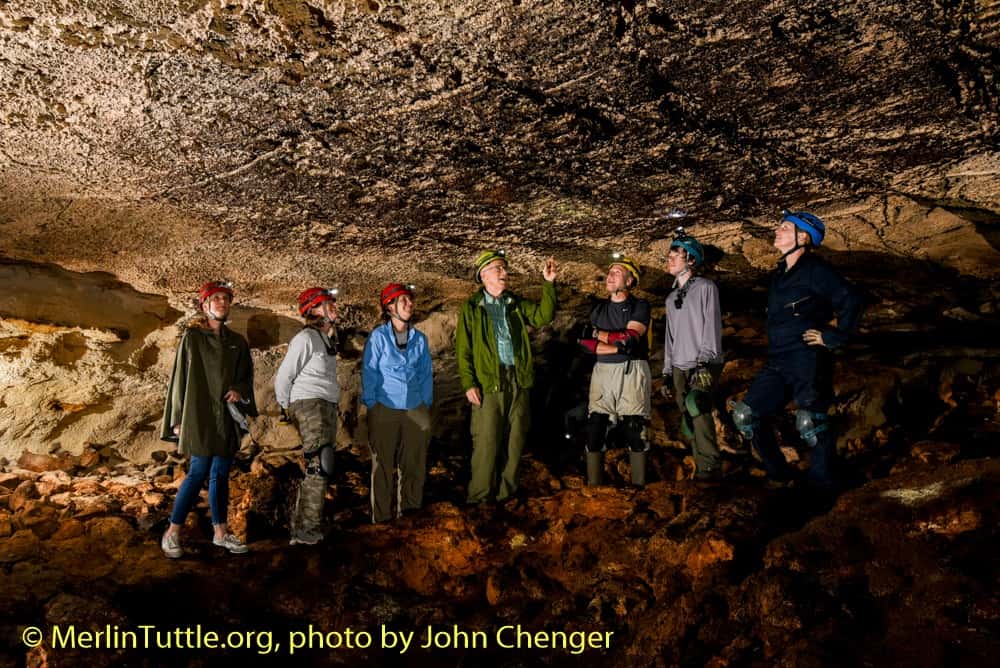The Costs of Bat Decline
Can we afford to lose bats? A recent study by Eyal Frank of the University of Chicago reveals that the dramatic decline in U.S. bat
Loss of essential roosts, especially those in caves, appears to be the most important cause of North American bat decline and endangerment. Millions of bats have been lost from single caves, initially due to saltpeter extraction for gun powder, and later when they were further altered for tourism. Some caves were even burned due to exaggerated fear of bats.
In recent decades, there have been numerous opportunities to recognize mistakes from the past as well as opportunities for the future. One way to address these issues is through cave management training. Bat Survey Solutions held a workshop in San Marcos, Texas from May 7-9, where attendees were provided with examples of a variety of case histories and what they’ve taught us.

Organized by America’s leading bat workshop trainers, John Chenger and Janet Tyburec, it was taught by Jim “Crash” Kennedy and me. Jim covered planning and implementing bat cave surveys and how to build gates to minimize predation and vandalism. I explained bat needs, how to recognize and quantify evidence of past use, how to restore altered roost temperatures, and how to manage entrance area vegetation for species-specific needs. We both emphasized the key importance of protecting and/or restoring caves or mines providing the best conditions, not necessarily the locations of greatest current use. Unfortunately, most of today’s remaining bats are living in homes of last resort, a key reason why they were declining, even before the threats of wind turbines, climate change and white-nose syndrome.
Outstanding protection and restoration opportunities for the future were explained, accompanied by case-history examples of dramatic population recoveries at properly protected and restored locations. Despite flooding rains, we were able to demonstrate a success story involving private landowner efforts to restore a cave myotis colony (top bat photo) in a local neighborhood. Workshop participants represented cave areas and concerns from coast to coast.
Check out Bat Survey Solutions upcoming events.


Love our content? Support us by sharing it!
Can we afford to lose bats? A recent study by Eyal Frank of the University of Chicago reveals that the dramatic decline in U.S. bat
Bats are among the most fascinating yet misunderstood creatures in the natural world, and for many conservationists, a single experience can ignite a lifelong passion
Many bat conservationists know that Kasanka National Park in Zambia is an exceptional place for bats, but it is also the place that sparked my
The Kasanka Trust is a non-profit charitable institution, which secures the future of biodiversity in Kasanka National Park in Zambia. They welcome internships for students
2024 © Merlin Tuttle’s Bat Conservation. All rights reserved.
Madelline Mathis has a degree in environmental studies from Rollins College and a passion for wildlife conservation. She is an outstanding nature photographer who has worked extensively with Merlin and other MTBC staff studying and photographing bats in Mozambique, Cuba, Costa Rica, and Texas. Following college graduation, she was employed as an environmental specialist for the Florida Department of Environmental Protection. She subsequently founded the Florida chapter of the International DarkSky Association and currently serves on the board of DarkSky Texas. She also serves on the board of Houston Wilderness and was appointed to the Austin Water Resource Community Planning Task Force.
Michael Lazari Karapetian has over twenty years of investment management experience. He has a degree in business management, is a certified NBA agent, and gained early experience as a money manager for the Bank of America where he established model portfolios for high-net-worth clients. In 2003 he founded Lazari Capital Management, Inc. and Lazari Asset Management, Inc. He is President and CIO of both and manages over a half a billion in assets. In his personal time he champions philanthropic causes. He serves on the board of Moravian College and has a strong affinity for wildlife, both funding and volunteering on behalf of endangered species.